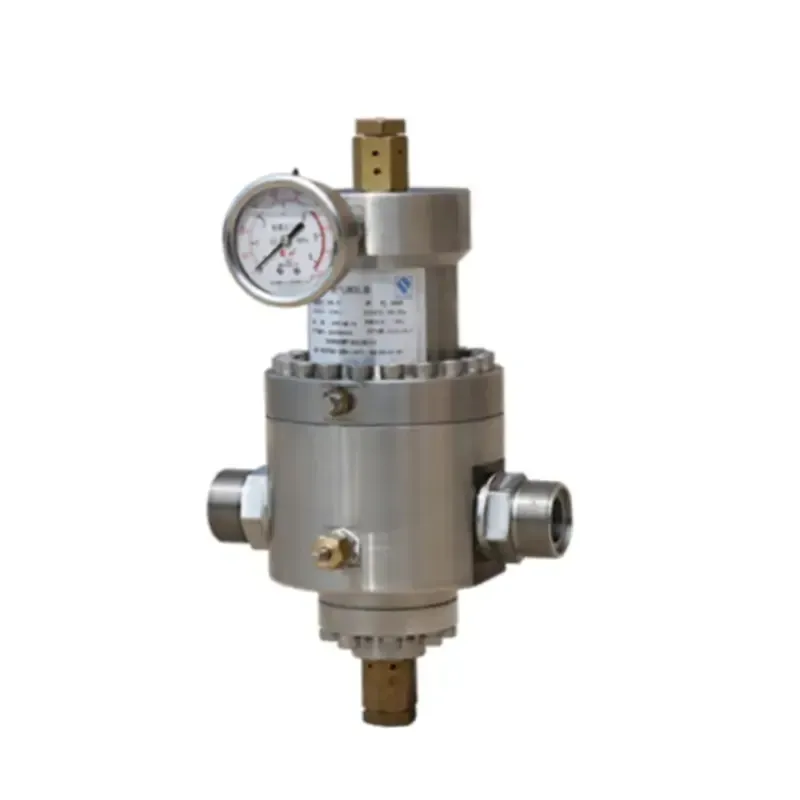
Nov . 12, 2024 00:07
Back to list
pressure reducing regulators
Understanding Pressure Reducing Regulators Essential Components in Fluid Systems
Pressure reducing regulators are crucial components in various fluid systems, serving to maintain a stable output pressure regardless of fluctuations in the input pressure. These devices are extensively used across numerous industries, including gas and oil, water treatment, HVAC systems, and many more. Understanding the function, types, and applications of pressure reducing regulators can provide insights into their importance and operational efficiency.
What are Pressure Reducing Regulators?
A pressure reducing regulator is a mechanical device that automatically reduces and maintains pressure from a higher inlet pressure to a predetermined lower outlet pressure. The primary function of the regulator is to control pressure in a system to ensure safe and efficient operations. This is critical in systems where excessive pressure can lead to equipment failure, safety hazards, or inefficiencies.
How Do They Work?
The operation of a pressure reducing regulator is based on the principles of fluid dynamics and mechanical engineering. When fluid enters the regulator, it encounters a diaphragm that is responsive to pressure changes. As the inlet pressure increases, the diaphragm moves, adjusting a valve that regulates the flow of fluid to the outlet. The regulator continuously monitors the outlet pressure and makes real-time adjustments to keep it at the desired level.
The device typically includes several key components - Diaphragm A flexible membrane that moves in response to pressure changes. - Spring Applies force to the diaphragm, providing resistance against the inlet pressure. - Adjustable Set Point A mechanism that allows the user to set the desired outlet pressure. - Port Connections Inlet and outlet ports through which the fluid flows.
Types of Pressure Reducing Regulators
Pressure reducing regulators come in various designs and configurations, tailored for specific applications. Here are some common types
1. Single-Stage Regulators These regulators reduce pressure in one step. They are typically used in systems where inlet pressure does not fluctuate significantly.
pressure reducing regulators

2. Two-Stage Regulators These regulators provide a two-step reduction in pressure and are useful in applications where inlet pressure varies widely. The first stage reduces the pressure to a moderate level, and the second stage fine-tunes it to the desired output.
3. Back Pressure Regulators Unlike traditional pressure reducers that regulate downstream pressure, back-pressure regulators maintain pressure on the inlet side by releasing excess pressure upstream.
4. Automatic and Manual Regulators Automatic regulators adjust pressure without human intervention, while manual types require human input for adjustments.
Applications of Pressure Reducing Regulators
Pressure reducing regulators are vital in various applications - Gas Distribution Systems They are essential for controlling the pressure of gases such as natural gas or propane, ensuring safe delivery to consumers. - Water Supply Systems These regulators maintain a consistent water pressure in municipal water supplies, protecting infrastructure from potential damage due to overpressure. - Industrial Processes In manufacturing, pressure regulators help maintain the correct pressure for various processes, improving safety and efficiency. - HVAC Systems They regulate refrigerant pressure in heating, ventilation, and air conditioning systems, optimizing performance and energy efficiency.
Importance of Regular Maintenance
Like any mechanical system, pressure reducing regulators require regular maintenance to ensure optimal performance. Factors such as wear and tear, debris build-up, and corrosion can affect their operation, leading to inefficiencies or failures. Regular inspections, cleaning, and replacements of worn parts are crucial for maintaining their reliability and safety.
Conclusion
In conclusion, pressure reducing regulators are indispensable components in fluid systems, providing stability and safety by regulating pressure. Their ability to maintain consistent output pressure despite varying input pressure makes them essential in numerous applications across different industries. By understanding their operation, types, and maintenance needs, professionals can ensure the efficient use of these critical devices, contributing to overall system safety and performance. As technology advances, the design and efficiency of pressure reducing regulators are likely to improve, further enhancing their role in modern fluid systems.
Next:
Latest news
-
Safety Valve Spring-Loaded Design Overpressure ProtectionNewsJul.25,2025
-
Precision Voltage Regulator AC5 Accuracy Grade PerformanceNewsJul.25,2025
-
Natural Gas Pressure Regulating Skid Industrial Pipeline ApplicationsNewsJul.25,2025
-
Natural Gas Filter Stainless Steel Mesh Element DesignNewsJul.25,2025
-
Gas Pressure Regulator Valve Direct-Acting Spring-Loaded DesignNewsJul.25,2025
-
Decompression Equipment Multi-Stage Heat Exchange System DesignNewsJul.25,2025

